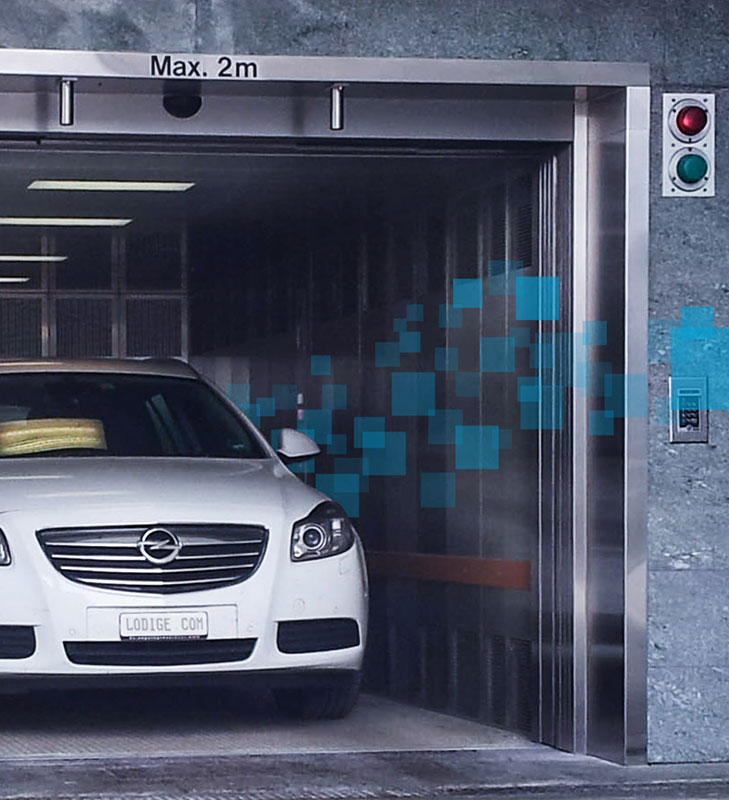The safety design and emergency measures of car elevators are the key to ensure the safe operation of elevators in high-frequency use, heavy loads and high-risk environments. The safety design of car elevators must not only meet the basic mechanical safety standards, but also consider the response to special situations such as high temperature, overload, improper operation of personnel and power failure. The following are the key points and emergency measures of the safety design of car elevators:
The safety design of car elevators involves many aspects, including mechanical, electronic, control system and structural design. Its purpose is to ensure the safe use of car owners and elevators and prevent safety accidents caused by technical failures or improper human operation.
The car elevator car should be equipped with an automatic safety door to ensure that the door remains closed when the elevator is running to avoid injuries to the owner or other personnel caused by the opening of the door. The safety door usually has a sensor, and when an obstacle is sensed, the door will automatically open in the opposite direction or stop closing. Appropriate protective measures should be set up in the car, such as anti-collision design at the bottom or both sides of the car to prevent the vehicle from colliding or damaging the elevator structure. The floor of the elevator car is usually designed with a non-slip and pressure-resistant structure to prevent the wheels from sliding or the vehicle from sliding down due to the elevator losing control.
There should be an emergency stop button in the car, so that the owner can quickly stop the elevator in case of an emergency. This button is usually located in a conspicuous position in the elevator and can be quickly operated at any time. The elevator should be equipped with an automatic braking device (such as electromagnetic brakes, hydraulic brakes, etc.) to ensure that the elevator can automatically stop and remain stable in the event of a failure, overload or other dangerous situation. The elevator is equipped with an overload sensor that can automatically detect excessive load in the car and issue a warning or stop the operation of the elevator. The overload protection device ensures that no accidents occur due to the load exceeding the maximum capacity of the elevator.
Emergency measures are the key design of the car elevator to ensure the safety of the owner and equipment when a failure or emergency occurs. The emergency system not only provides a response when an unexpected event occurs, but also ensures that the owner can safely leave the elevator under extreme conditions such as power outages and equipment failures.
In the event of a power outage, the car elevator needs to have an emergency power supply (such as a battery pack, diesel generator, etc.) to ensure that the elevator can continue to run to a safe position or enable the owner to evacuate safely. For example, the elevator system should be able to continue to provide basic operations in the event of a loss of main power, such as stopping the car at the nearest floor and opening the door for the owner to evacuate. Even in the event of a complete loss of power, the elevator should allow manual operation. This operation is usually performed by professional maintenance personnel, and the owner or user cannot operate it by themselves, but can evacuate through the emergency evacuation passage.

In the event of an elevator failure, the owner can enter the elevator shaft or other safe location through the elevator's emergency exit (such as the emergency escape door). Passageways, escape ladders and other facilities are set up in the shaft to ensure that people can evacuate smoothly in an emergency. The interior of the elevator should be equipped with clear emergency evacuation signs and visual escape route guidance to ensure that the owner can quickly and accurately identify and enter the safe area in an emergency.
The safety design and emergency measures of car elevators are key factors to ensure their safe operation. Comprehensive consideration of the elevator's mechanical design, control system, emergency plan and high-frequency and high-load usage scenarios can effectively improve the safety of the elevator in daily use and ensure that in the event of an emergency, the owner and maintenance personnel can respond quickly and take appropriate emergency measures.
Therefore, the design of car elevators should not only meet basic functional requirements, but also focus on the detailed design of safety performance to ensure that the elevator system can operate stably in a complex and changeable usage environment and protect the safety of users and equipment.











